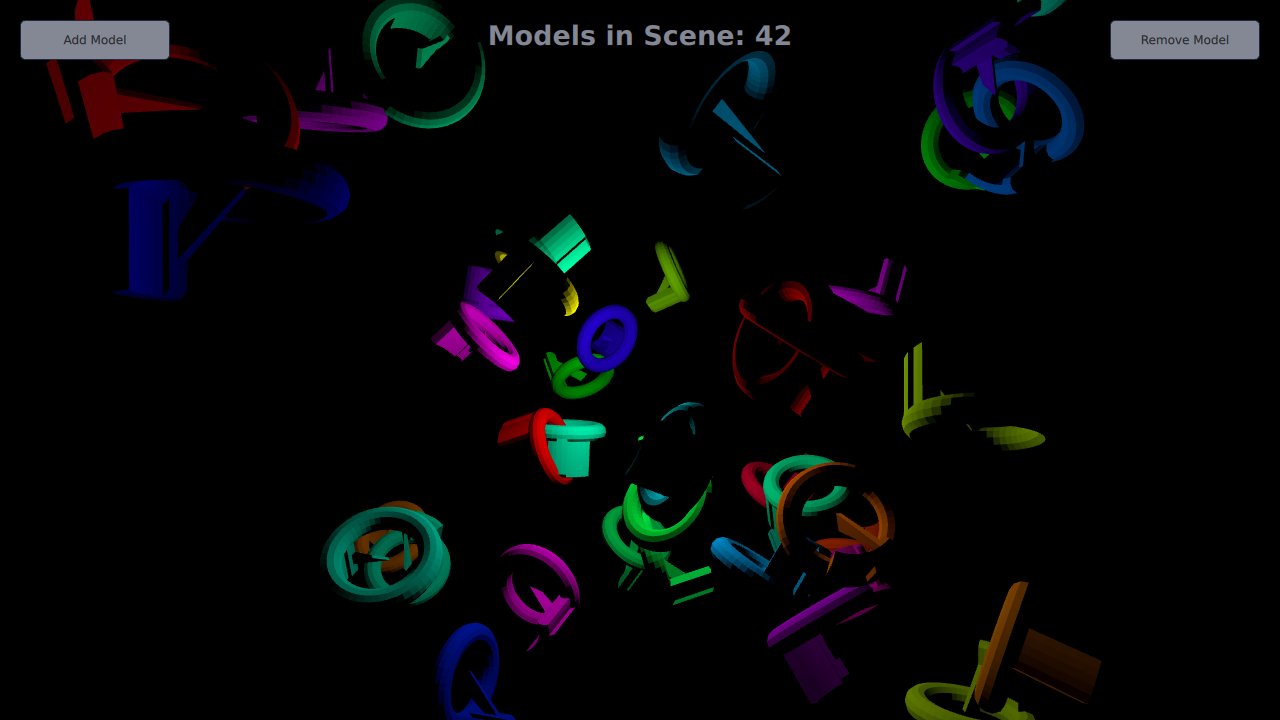
Demonstrates dynamic model creation.
This example demonstrates creating models dynamically in an application. 10 models are created dynamically at the start of the application, and more can be added or removed using the + and - buttons.

We are going to need a Node to hold the dynamically created models.
Node { id: shapeSpawner property real range: 300 property var instances: [] property int count ...
We're creating 10 models at Component.onCompleted so the example shows something at startup.
Component.onCompleted: { for (var i = 0; i < 10; ++i) shapeSpawner.addShape() }
In order to add a new item to the scene, we first use the Qt.createComponent function to create a Component for our model. Then we use the component's createObject function to instantiate the item, passing in the position and scale as parameters.
function addShape() { var xPos = (2 * Math.random() * range) - range; var yPos = (2 * Math.random() * range) - range; var zPos = (2 * Math.random() * range) - range; var shapeComponent = Qt.createComponent("WeirdShape.qml"); let instance = shapeComponent.createObject(shapeSpawner, { "x": xPos, "y": yPos, "z": zPos, "scale": Qt.vector3d(0.25, 0.25, 0.25)}); instances.push(instance); count = instances.length }
Dynamically created models are removed simply by popping and destroying them from the instance stack.
function removeShape() { if (instances.length > 0) { let instance = instances.pop(); instance.destroy(); count = instances.length } }

As part of the free Business evaluation, we offer a free welcome call for companies, to talk about your requirements, and how the Felgo SDK & Services can help you. Just sign up and schedule your call.
Sign up now to start your free Business evaluation:

